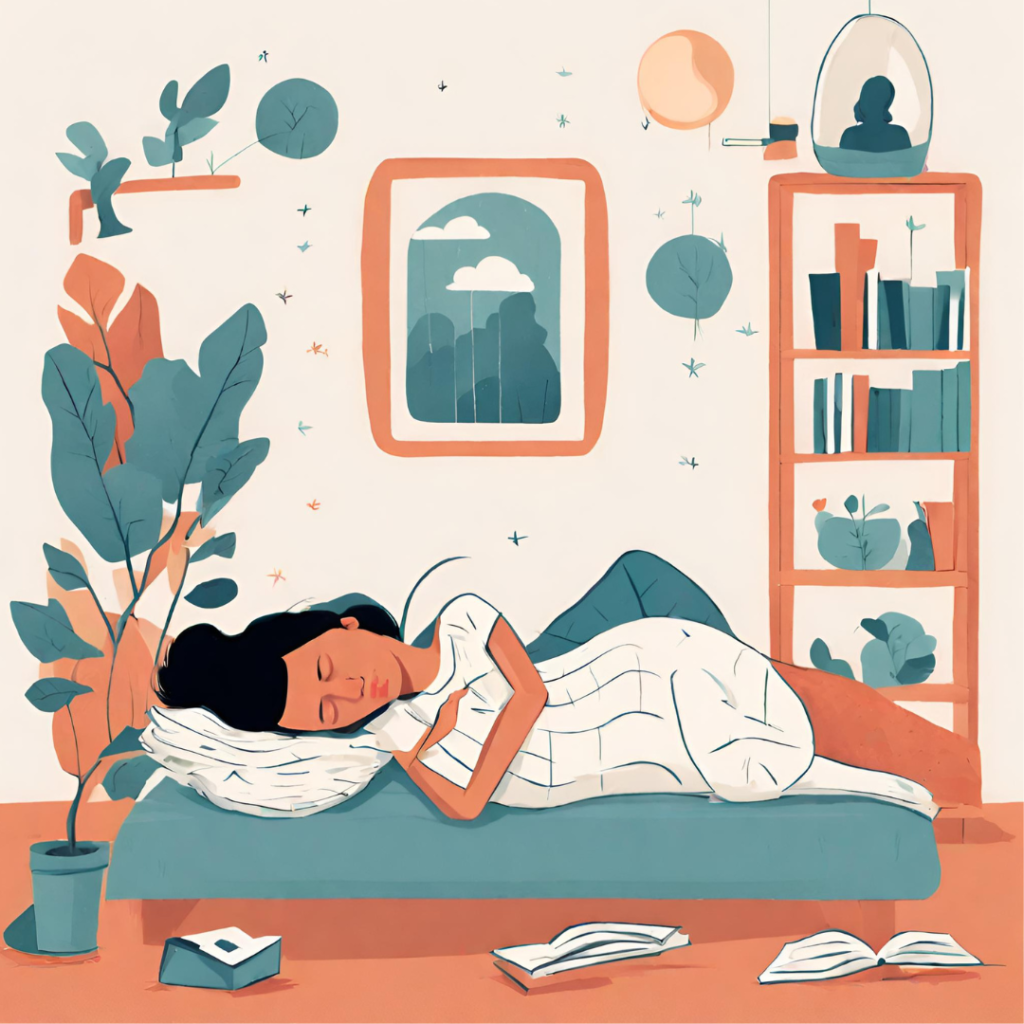Napping is more than just a way to catch up on sleep; it’s a gateway to enhanced self-awareness and mental clarity. In this exploration of mindful napping techniques, we delve into how napping can be a transformative tool for self-reflection and mindfulness. This practice offers a unique opportunity to reconnect with oneself amidst the hustle and bustle of daily life, providing a peaceful interlude for introspection.
The Science Behind Mindful Nap Practices
Far from being a mere remedy for tiredness, napping is backed by science as a method to rejuvenate both mind and body. Studies have shown that a brief nap can significantly improve cognitive functions such as memory, creativity, and problem-solving skills. It’s not the duration, but the quality of the nap that makes a difference. A short nap, lasting about 20-30 minutes, can leave you feeling refreshed and avoid the grogginess often associated with longer sleep periods. This state of heightened awareness is perfect for engaging in mindfulness napping strategies, enhancing your ability to tackle daily challenges with a clear mind.
Napping for Mindfulness and Self-Reflection: A Symbiotic Relationship
Often, when we think of mindfulness, the image of meditation or quiet contemplation comes to mind. However, harnessing the power of naps for mindfulness can also be a highly effective practice. By setting an intention before napping, like focusing on a particular thought or allowing the mind to wander freely, you can transform your rest period into a mindful retreat. The tranquility and clarity that follow a nap provide an ideal backdrop for observing your thoughts and emotions without judgment, thus deepening your self-awareness and emotional well-being.
Mastering the Art of Napping While Traveling
Traveling brings its own set of challenges to maintaining a regular napping routine, but with a few mindful nap practices, you can still enjoy the benefits of a quick rest. Seek peaceful spots like quiet corners in parks, cozy cafes, or even a comfortable bench with a scenic view. For longer journeys, like flights or train rides, noise-canceling headphones and a travel pillow can be indispensable for creating a temporary nap haven. The key is to find a place where you feel relaxed and safe to drift into a brief, rejuvenating slumber.

Self-Reflection Through Napping: A Unique State of Consciousness
Napping does more than just rest the body; it facilitates a unique state of consciousness conducive to self-reflection. The period immediately following a nap is often characterized by heightened clarity and calmness, making it an excellent time for introspection. Keeping a nap journal close by to capture any thoughts, feelings, or insights post-nap can be a vital component of incorporating naps into mindful living. This practice not only aids in better understanding oneself but also contributes to making more mindful decisions.
Integrating Napping into Your Mindful Travel Routine
Embracing the art of napping while on the move requires some planning and flexibility, essential aspects of mindful napping techniques. Start by evaluating your travel itinerary for potential downtime, ideal for a short nap. Listening to your body’s cues is crucial; if you feel tired after a day of exploration, a brief rest can be immensely rejuvenating. Even a quick, 15-minute power nap can refresh your senses and enhance your overall travel experience. Remember, while it’s tempting to fill every moment with activities, the quality of your experiences often outweighs quantity. A well-rested mind is more present and capable of fully appreciating each moment. Napping, as a component of mindfulness napping strategies, helps maintain this balance, ensuring you’re both physically and mentally ready for adventure.
Balancing Cultural Experiences with the Need for Rest
Travel is as much about experiencing new cultures and environments as it is about personal growth and discovery. However, to fully absorb and appreciate these experiences, mental and physical attunement is essential. Napping offers a way to reset your mind, aligning perfectly with the concept of napping for mindfulness and self-reflection. When planning your itinerary, consider integrating short rest periods between activities. Not only does this prevent burnout, but it also allows time for processing and reflecting on your experiences. A mid-day nap in a serene park, for example, can provide a respite from the sensory overload of bustling city tours, enabling you to continue your explorations later with renewed energy and perspective.
Conclusion: Napping as a Path to Mindful Living
Napping transcends its traditional perception as just a rest tool, emerging as a powerful instrument for self-improvement and personal growth. Through self-reflection through napping, we access a unique state of tranquility that fosters self-reflection and heightened awareness, contributing significantly to mental and emotional well-being. This intentional pause in our day facilitates a deeper connection with our inner selves, allowing us to emerge more centered, clear-minded, and prepared to engage with the world with fresh perspectives and vitality. Whether at home, at work, or during travels, incorporating naps into mindful living is a step towards a more introspective, mindful, and balanced life.


